Best edimentals to grow on the West Coast – whether artichokes or pomegranates, these crops will thrive in a myriad of microclimates from Washington to southern California
Discover what other edibles can beautify your West Coast garden

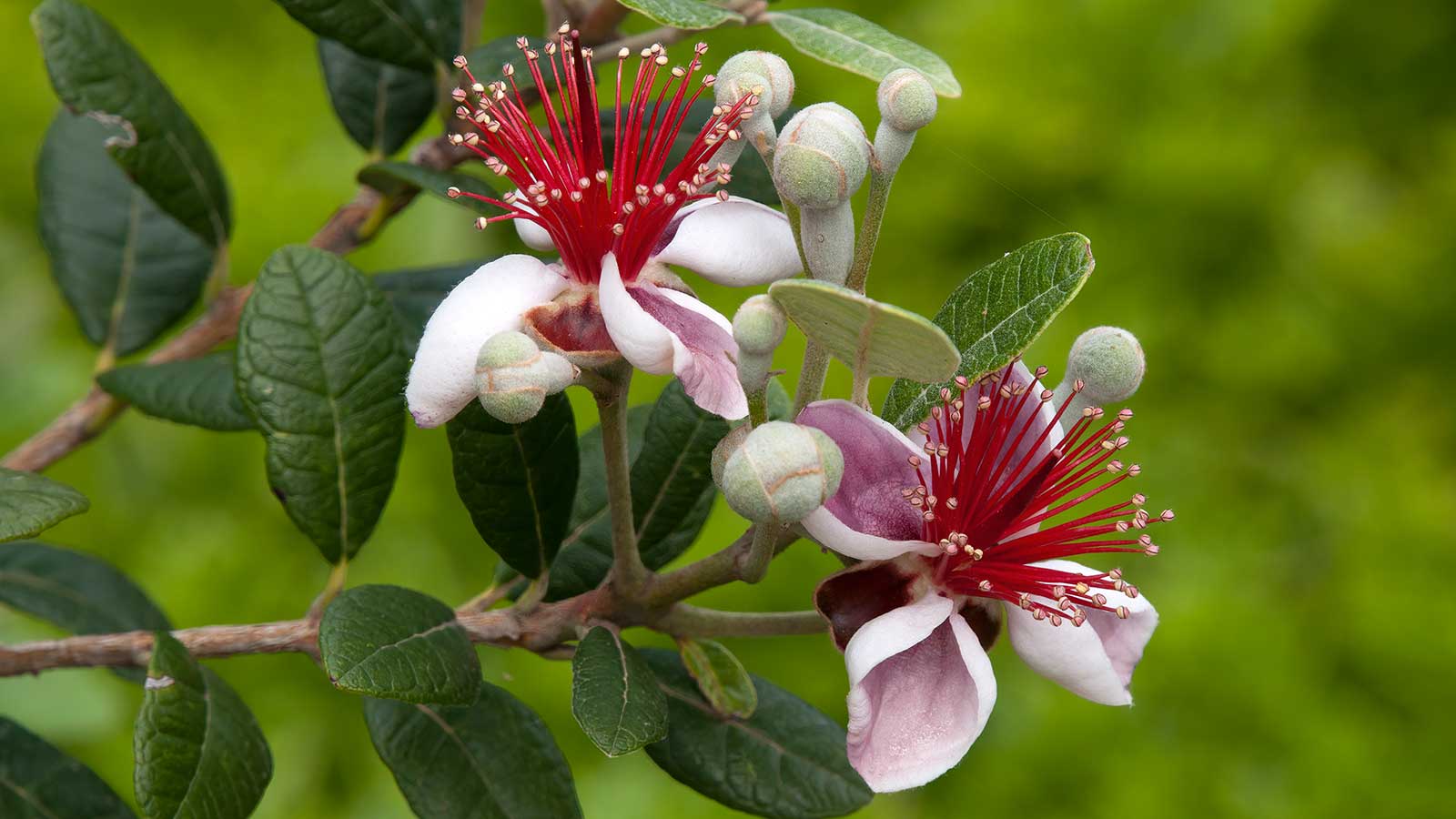
The West Coast is known for its healthy living and farm-to-table restaurants. With edimentals – ornamental plants that have the benefit of being edible with leaves, fruits, shoots and roots – there’s no need to rely on restaurants or farmers markets for that farm-fresh fruit and veg. You can grow them right at home. And because edimentals are beautiful enough to incorporate into your landscape, there’s no need to set aside valuable yard space for a traditional-looking vegetable garden.
With its myriad microclimates, the list of edimentals that grow on the West Coast runs from tropical to temperate and include herbs, flowers, fruits and vegetables. If you have limited space, each will blend right in with whatever in-ground or patio garden you are currently tending. And no one will even be able to tell you’re plucking leaves or fruits from your plantings to enhance your meals.
So what are the edimentals you can expect to do well along the West Coast? We’ve spoken to regional experts to find out their suggestions for plants that offer both beauty and sustenance. Plant several of these in your yard or along your patio and you will no long have the edimentals versus bedding plants conundrum.
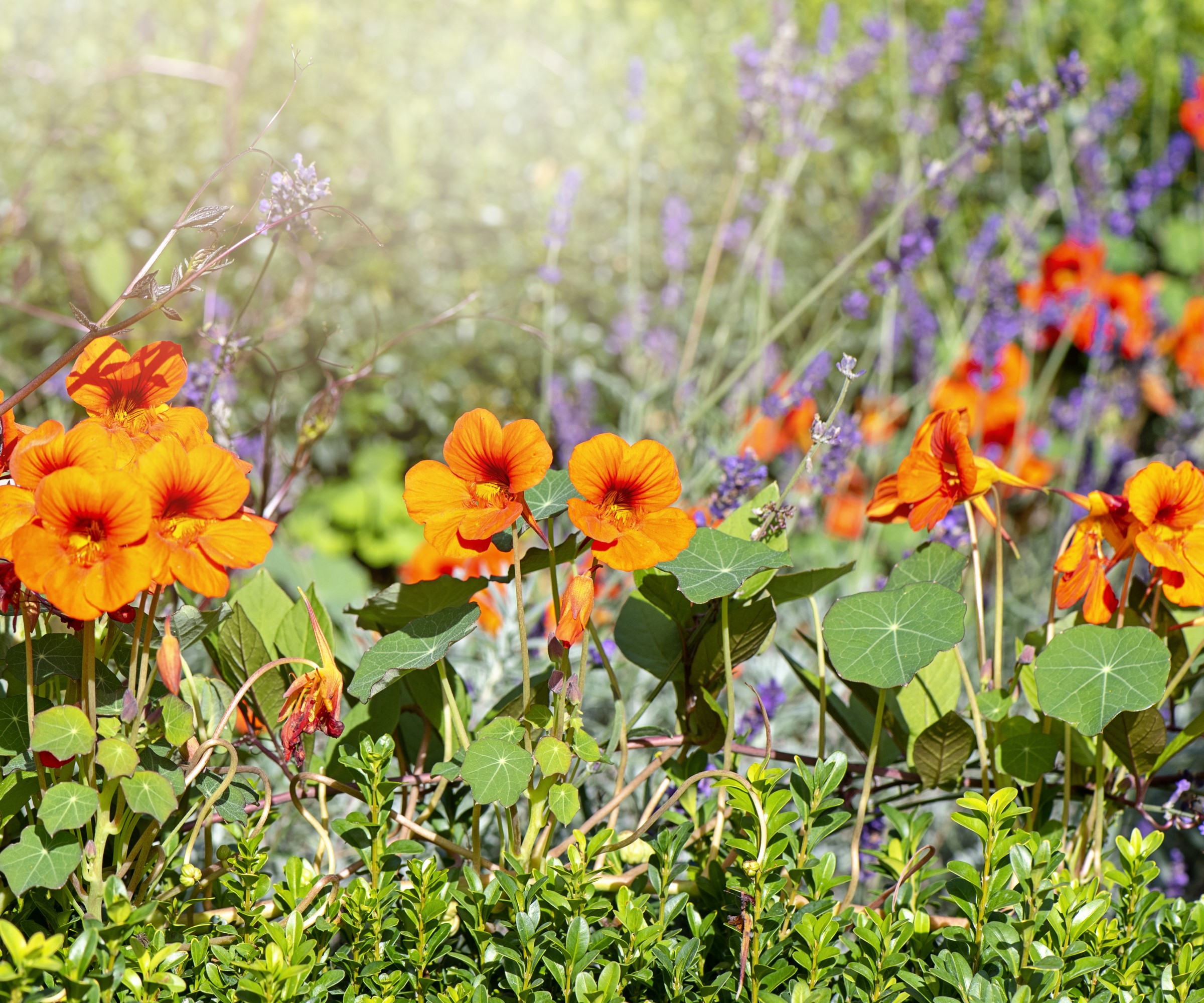
Edimentals explained
Denise Mullins, Director of Product Innovation for commercial plant grower Smith Gardens in Bellingham, Washington, started a production line at her company called Edimentals: The Perfect Match.
‘Our edimentals line wasn’t a new concept, it was just something edibly ornamental, which is my take on it,’ Mullins said. 'I usually mix edible flowers and vegetables and herbs together for a nice combination.’ Mullins doesn’t do this just for work, either. ‘I landscaped my entire front yard with edibles,’ she said. ‘Everything in my yard is edible.’
Edimentals are versatile and can be found in any plant category – annuals, perennials, herbs, trees and shrubs. In fact, they’ve become so in demand that plant breeders are now selecting edible plants not just for their taste and use but for the beauty they bring to gardens and patios.
Growing Conditions for West Coast Edimentals
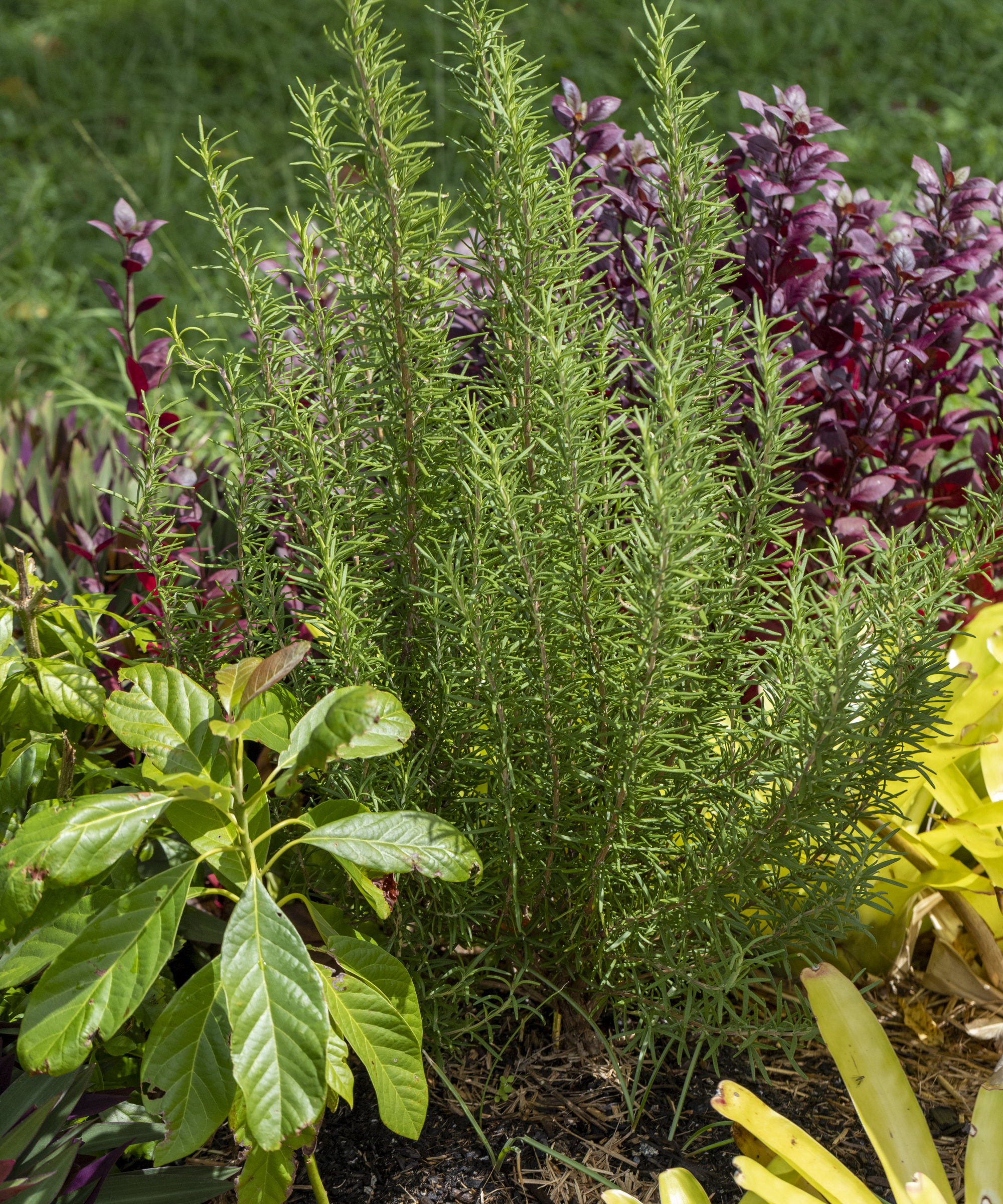
The thing that sets the West Coast apart from the East is its network of microclimates. In fact, the climates differ enough within such small areas that Sunset magazine developed its own set of zone standards – Sunset Zones – for states from Washington to Texas and including some of the Rocky Mountain states.
Design expertise in your inbox – from inspiring decorating ideas and beautiful celebrity homes to practical gardening advice and shopping round-ups.
For this listing we’ll concentrate on the edimentals that do well along the West Coast from Washington to southern California.
‘California has a wide climate spread, anywhere from USDA zone 4 all the way up to zone 11,’ says Janet Sluis, horticulturist and director of the Sunset Western Garden Collection.
‘Most gardens here in California are in USDA zones 9-10 and receive months of no rainfall. Consequently, we are very low water/drought focused and look to other Mediterranean climates for appropriate plant material.’
‘I can't really speak for California,’ Mullins says, ‘but for Washington and Oregon, we're cooler here. I can use a lot of cool-weather crops.’

Denise currently serves as Director of Product Innovations at Smith Gardens. Her career started with a love of plants and has had several chapters. She began with a brief stint in landscape design and architecture before running a 5-acre organic farm in Hawaii which she left for a coveted job at the Dallas Arboretum. Through her work in Dallas, she appeared on garden shows, spoke at Master Gardener events, and discussed edible herbs on live talk radio, as well as writing online articles. She left to join Smith Gardens where she managed the planning of over 4700-line items and 32 brands and established the company as a master trial garden site before taking on her newly created role.

Janet Sluis is a Berkeley based horticulturist specializing in low-water, sustainable and easy-care plants. Focused on replacing thirsty, labor-intensive varieties with colorful, resilient alternatives, she works with plant breeders, hybridizers, and nurseries all over the world. Her plant collection test garden is shown in Kathy Brenzel’s latest book The Sunset Western Garden Book of Easy Care Plantings.
Annual Edimentals

With cooler weather, Mullins has more of an opportunity to grow annuals for ornamental use. Some that she uses include:
Purple cabbage (Brassica oleracea var. capitata f, rubra): Denise loves the color and shape in the garden. ‘I plant it next to golden oregano (Origanum vulgare 'Aureum') or sage.
Cilantro (Coriandrum sativum) and Parsley (Petroselinum crispum): The frilly leaves and reliably green textures fill spaces within a garden and make a nice edging.
Edible flowers such as violas (Viola sp.), begonia (Begonia sp.) and dianthus (Dianthus sp.): Beautiful in the garden and on the plate.
Perennial Edimentals
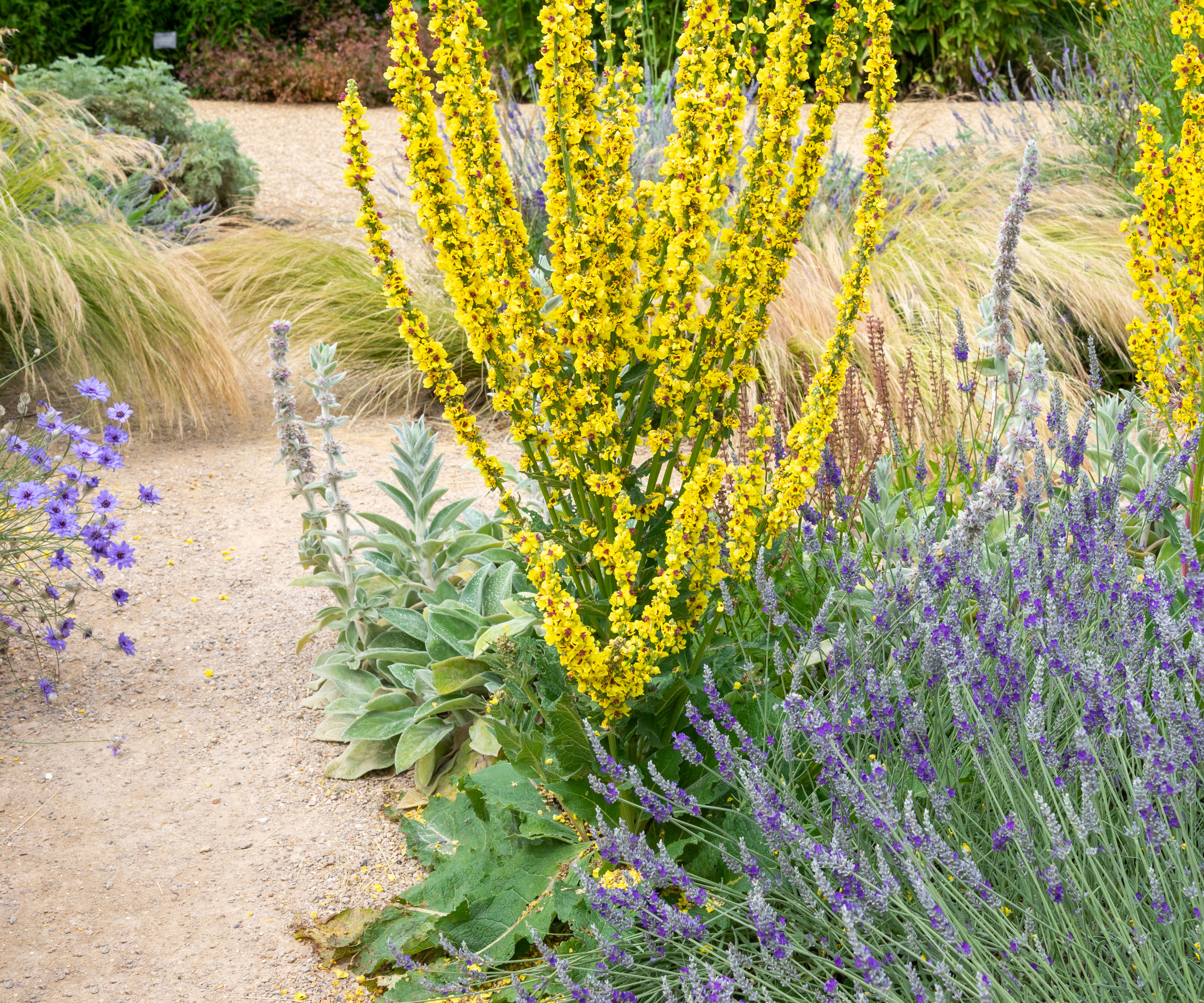
For Berkeley, California-based Sluis, perennial herbs are a mainstay in the edimental landscape. ‘Rosemary comes in all shapes and sizes, and is a landscape staple here,’ she says. ‘I particularly like ‘Chef's Choice’, as it is one of the smallest culinary varieties, and works well in both containers and in ground.’
Find snips for harvesting your herbs at Target.
Other perennial herbs that Sluis recommends include:
Sage (Salvia officinalis, zones 4-10)
Thyme (Thymus vulgaris, zones 4-9)
Oregano (Origanum vulgare, zones 5-10)
Lavender (Lavandula sp., zones 5-9): Sluis says ‘Meerlo’ can take the heat and low-water conditions better than other types of lavender and has beautiful, variegated foliage.
You can find ‘Meerlo’ lavender online at Walmart.
In addition to the herbs Sluis mentions, Mullins also uses fennel (Foeniculum vulgare, zones 4-9). ‘The coloring of the bronze fennel also has a pink to it, and the color is just so right in the landscape.’
She’s also a fan of using artichokes (Cynara cardunculus, Zones 7-11) as a sculptural element. ‘It's a perennial for me, and they get huge and beautiful.’
Edible Shrubs for the West
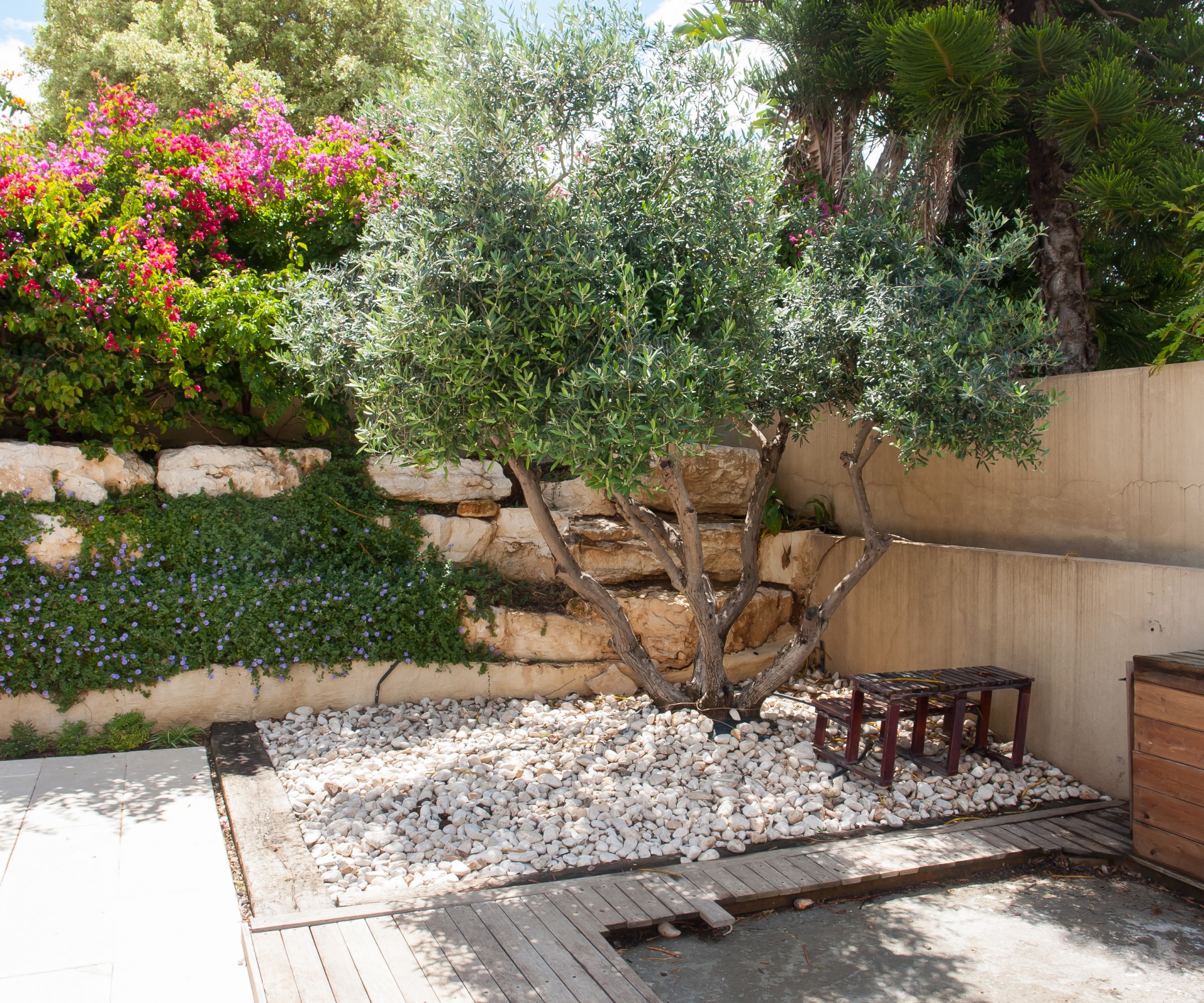
Mullins uses swamp rose mallow (Hibiscus moscheutos, zones 5-9) as an edible flowering shrub, with its petals being used in teas.
And speaking of the mallows, okra (Abelmoschus esculentus, zones 5-11) makes for an interesting edimental in the landscape, too. She has also used grape vines as structural elements in the edimental garden.
‘There are several large shrubs and trees that offer both ornamental and edible elements to a lower-water garden,’ Sluis says. She recommends figs (Ficus carica, zones 7-10) such as the variety ‘Little Miss Figgy’ that grow to be just 3-5 ft. tall. Other less-thirsty choices for edimental shrubs and trees that Sluis suggests are:
Pomegranate (Punica granatum, zones 7-10)
Pineapple Guava (Feijoa sellowiana, zones 8-11)
Bay Laurel (Laurus nobilis, zones 8-11). Sluis recommends the compact variety ‘Baby Bay’.
Olive (Olea europaea, zones 8-11)
Live ‘Little Miss Figgy’ fig trees are available at Fast Growing Trees.
With so many flowers, herbs, shrubs and traditional vegetables to choose from, it seems like everyone could do what Mullins does and have an entirely edible and beautiful home landscape.
If that seems intimidating, start small, perhaps on your patio. To learn how to get started, read our guide on how to create a balcony herb garden, which can easily translate to any small outdoor space.

Ellen Wells is a horticultural communications consultant with 30 years experience writing about all aspects of the gardening world, and for GardeningKnowHow.com since 2024. She specializes in retail horticulture, vegetable gardening and tropical plants. Ellen is based in southern New England where she gardens in zone 7a.